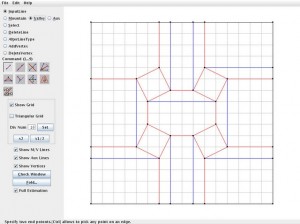Are Origami Instructions Protected By Copyright?
Yes, we’re just posting on this story now, even though we received notice of this case from plaintiff’s counsel about a week ago. There’s something a bit disturbing about receiving a mass e-mail with generic information on a case or legal situation. If you want our attention, treat it seriously, and don’t just send an e-blast to every Tom, Dick, and Harry that opines on art law.
Anyhow, for our faithful followers who have been e-mailing us about this and asking about this case via facebook and twitter, here it is!
Painter, Sarah Morris, has been sued for copyright infringement by 4 origami artists. The e-mail mentioned above contained this “explanation” on the need for this lawsuit.
Why did the artists take this step? Among other reasons, under American copyright law, the original artist has the right to control derivative works of our original works. (“Derivative works” are those works that are based upon our original works, but do other things to them – such as colorizing them, in this case.) As the original artists, they have the right to decide what you can do with their artwork, not Ms. Morris. Although they published our crease patterns, that does not mean we gave up our ownership rights to the original art works we created. 24 of her works (listed in the complaint) have been identified as unauthorized copies of origami crease patterns by modern origami artists.
Fair use? Infringement? We think this one’s fair use.
The complaint may be found here.
Tags: appropriation, color field, intellectual property, lang, morris, origami, painting, recipes, tranformative




Um, you can’t copyright a mere set of instructions. The proper protection for a method of constructing an object is a patent.
Upon review of the web info on this subject, it seems that there might be some case for the origami artists, since these are not really “instructions” but rather pattern diagrams (which, presumably, also have some kind of individual or general instructions for construction.) However, since copyright infringement is always a question of fact, to compare this to the radically different fact pattern in Cariou v Prince is kinda laughable.